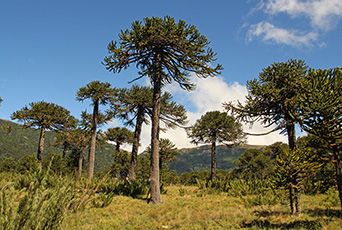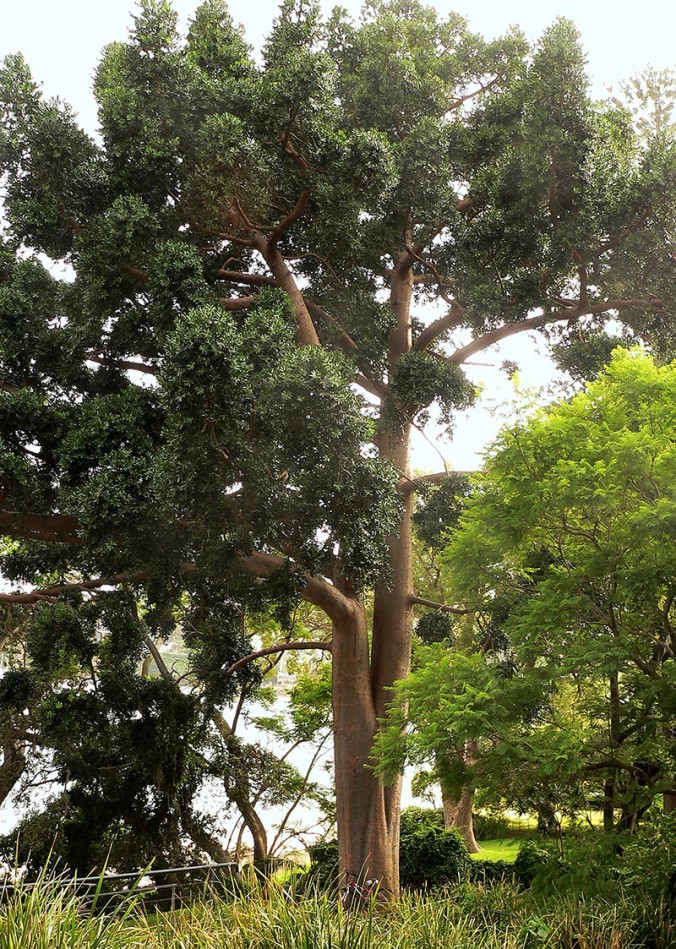I have always had a soft spot for Agathis trees. This magnificent planted Queensland kauri (Agathis robusta) is adjacent to the beach on eastern Sydney where I occasionally go for a quick swim before work. It has to be well over a hundred years old – perhaps two hundred.
Together Agathis and Araucaria form the Southern Hemisphere conifer family of trees Araucariaceae. Agathis – a genus of thirteen species is generally known as kauri, after the Maori name for the New Zealand species Agathis australis.
Although the genus extends as far south as the warm temperate forests of northern New Zealand, its main range is the tropical forest of the southwest Pacific, peninsular Malaysia, the Malay archipelago, New Hebrides, Fiji, New Caledonia and Queensland, Australia.
The Araucariaceae are one of the oldest, if not the most ancient of the conifers family of trees. The existing species of Araucaria and Agathis are the remnants of the family that once also flourished north of the Equator. However, they have retreated from their former important place in the world’s flora.

Described as a living fossil the monkey puzzle tree is the national tree of Chile.
Another famous member of the family is the monkey puzzle tree, or Chilean pine (Araucaria araucana). This tree is native to central and southern Chile and western Argentina. Because of its longevity this tree is often described as a living fossil. It is also the national tree of Chile.
